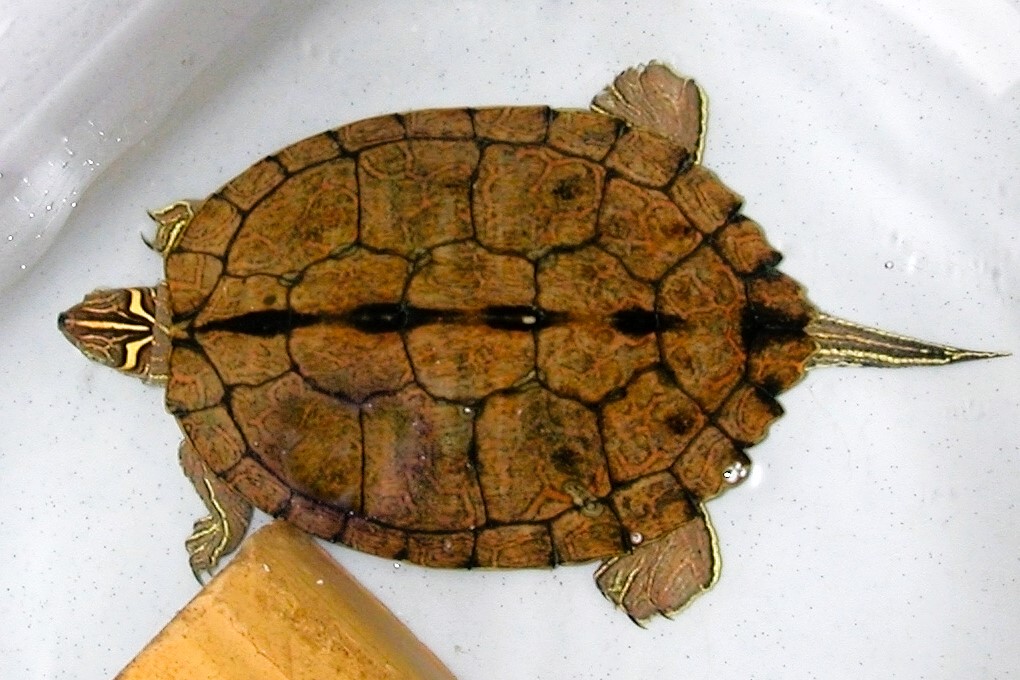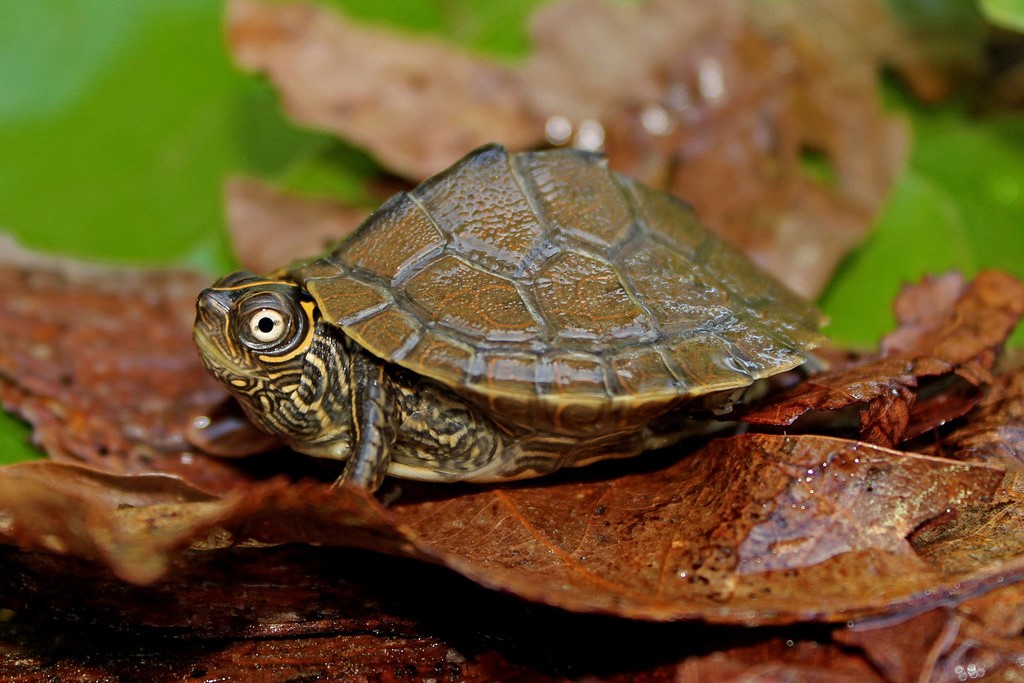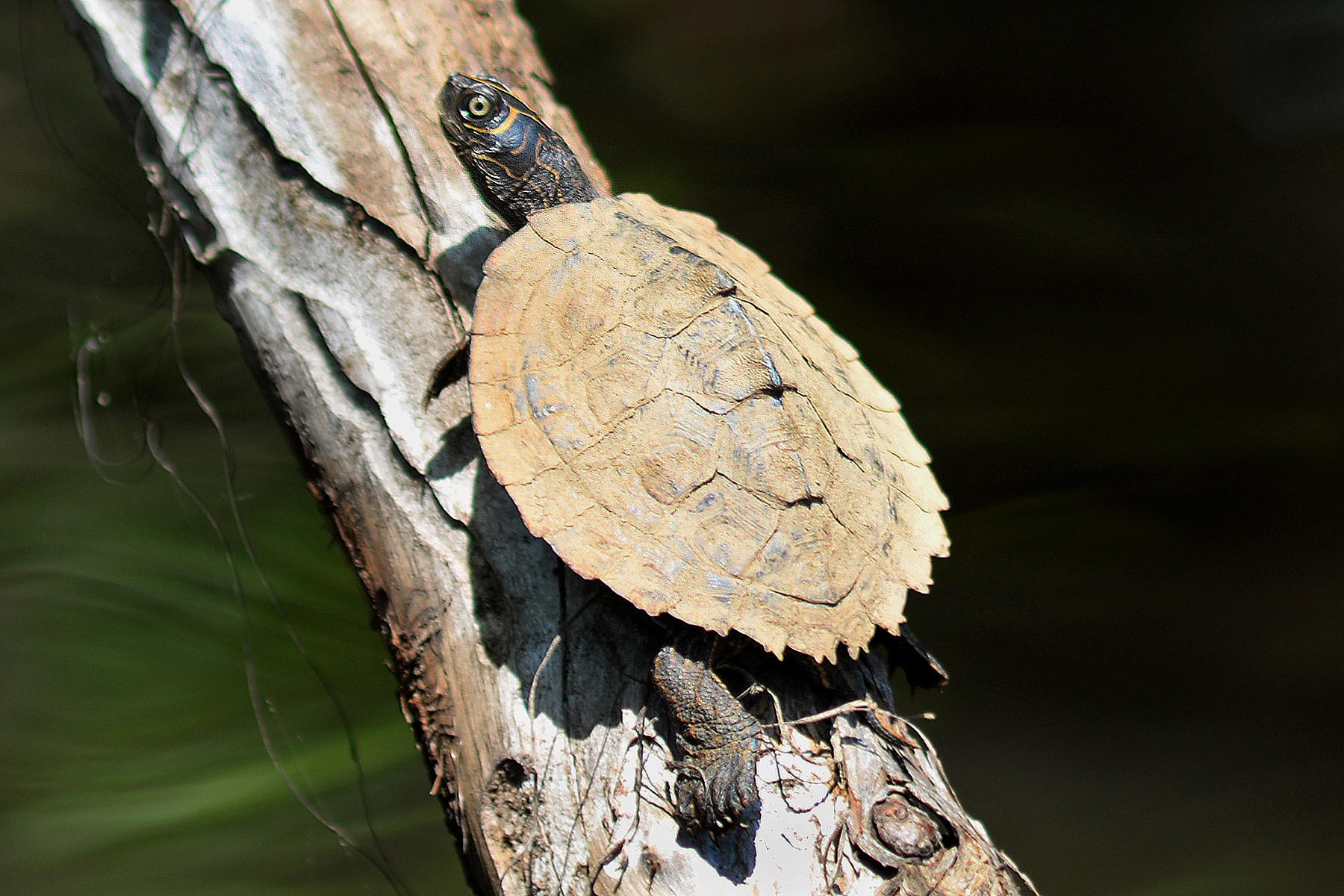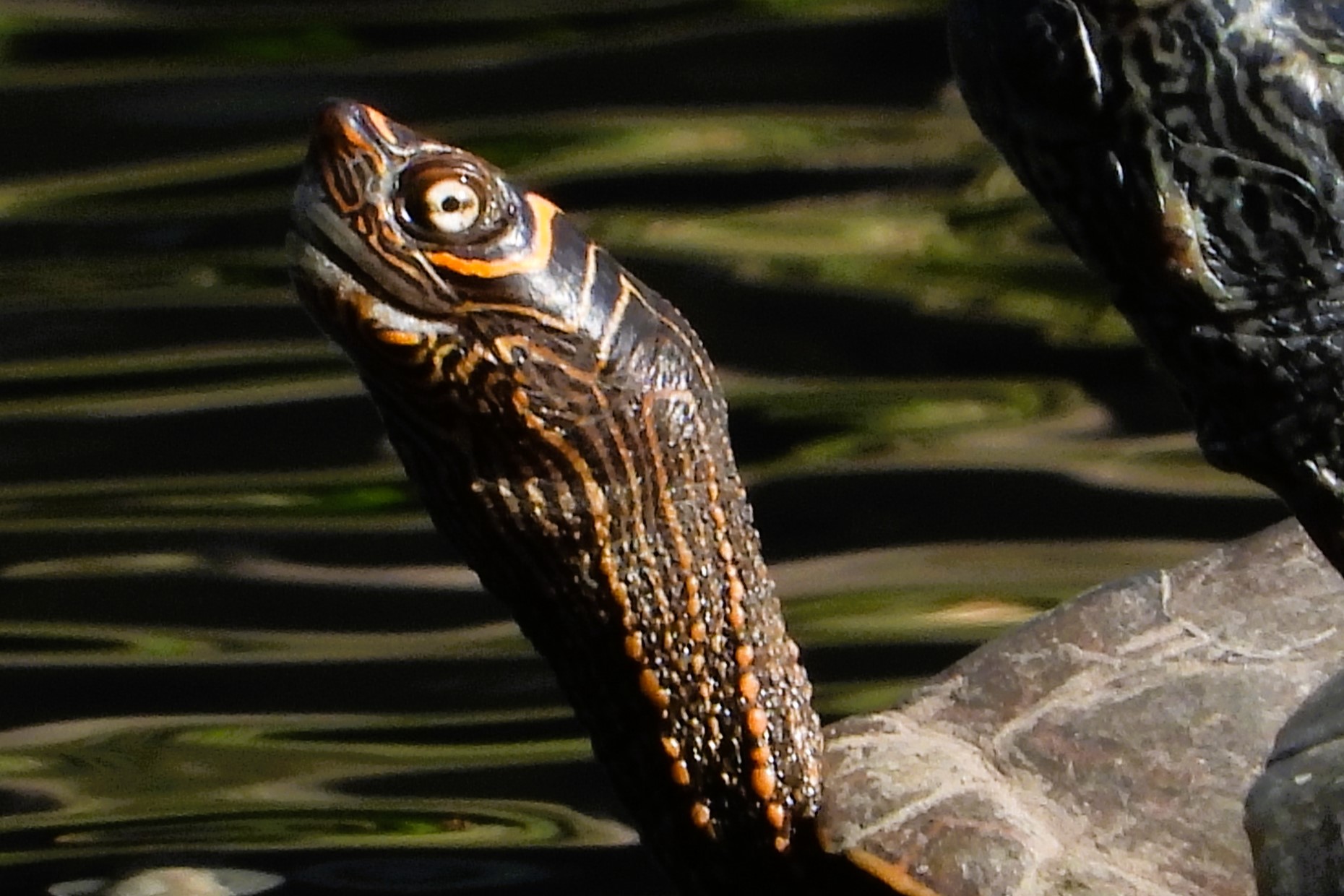Graptemys pseudogeographica kohni







Reptilia → Testudines → Emydidae → Graptemys → Graptemys pseudogeographica → Graptemys pseudogeographica kohni
Testûggine americana
The Mississippi Map Turtle ( Graptemys pseudogeographica kohni ) is a North American freshwater turtle, easily recognized by the reticulated pattern on its carapace, reminiscent of map lines, which gives it a particularly ornamental appearance.
This species exhibits marked sexual dimorphism: females reach a carapace length of 6–10 in (15–25 cm), while males are noticeably smaller, between 3.5 and 5.5 in (9–14 cm). In addition to size, dimorphism is also seen in other details: females have a larger head and a taller, more massive carapace, whereas males display a longer, more robust tail and especially long, well-developed claws on their forelimbs.
In young individuals, the carapace coloration is more vivid and contrasting than in adults, with prominent yellow eyespots that fade with age. The yellow spots, streaks, and network of lines create a distinctive, instantly recognizable visual effect on the back and head, while the median keel on the carapace is especially prominent in the youngest individuals.
In western Liguria, the Mississippi Map Turtle ( Graptemys pseudogeographica kohni ) occurs exclusively as an introduced species, the result of individuals released into the wild by private citizens—often following the exotic pet trade which, once easily accessible, later became difficult to manage.
Distribution of the species is fragmented and localized: sightings are mainly concentrated in slow-moving watercourses, artificial basins, and coastal wetlands, environments where it manages to establish small colonies sustained by suitable habitat and the presence of basking sites. However, the species' expansion is limited by its need for favorable environmental conditions and the distances between potentially suitable sites, but new introductions are always possible due to abandoning pets.
This species prefers aquatic environments of considerable size and depth, such as lakes, artificial ponds, slow-flowing rivers, and canals with abundant aquatic vegetation.
Coastal wetlands are also ideal habitats, provided they feature suitable basking elements, including emerging logs, stones, or rocks protruding from the water, offering sunny areas for thermoregulation.
Habitat selection, similar to other Emydidae, includes proximity to gently sloping banks, water quality, and the presence of adequate food resources, making it highly adaptable but still reliant on the availability of favorable sites.
The Mississippi Map Turtle ( Graptemys pseudogeographica kohni ) is a diurnal species, strongly linked to water and characterized by frequent and prolonged basking periods, necessary for thermoregulation, vitamin D3 synthesis, and maintaining immune defenses. In winter, especially in milder coastal areas, activity is significantly reduced but does not result in true hibernation, allowing certain individuals to become active even on the warmest days.
Reproduction takes place in the spring-summer period, with females digging holes on riverbanks to lay 6 to 13 eggs per nest; incubation varies from 60 to 75 days depending on climate conditions, and multiple clutches can occur in the same year.
The diet of the Mississippi Map Turtle ( Graptemys pseudogeographica kohni ) changes with age, reflecting pronounced dietary adaptability:
Juveniles behave mainly as carnivores, preying on aquatic insects and small mollusks.
Adults become omnivorous, adding mollusks, crustaceans, fish, and plant material to their diet, taking advantage of all available resources in the colonized habitat.
This dietary versatility is one of the secrets to the colonizing success of introduced Graptemys turtles.
In Liguria, the Mississippi Map Turtle ( Graptemys pseudogeographica kohni ) poses various risks, both to native species and to the balance of ecosystems:
The Mississippi Map Turtle ( Graptemys pseudogeographica kohni ) is an introduced species with invasive potential, closely monitored in western Liguria for its adaptability and ecological flexibility. At the same time, its need for exposed basking sites makes it sensitive to shoreline changes and competition with other turtles for thermoregulation areas.
Local biodiversity is threatened by the introduction of this species, so management actions include population monitoring, public education on the risks of abandonment, prevention of new releases, and prompt reporting of individuals found in the wild.
It is a collective responsibility to respect the ban on releasing this species into the wild and to cooperate with competent authorities in its management and impact prevention.